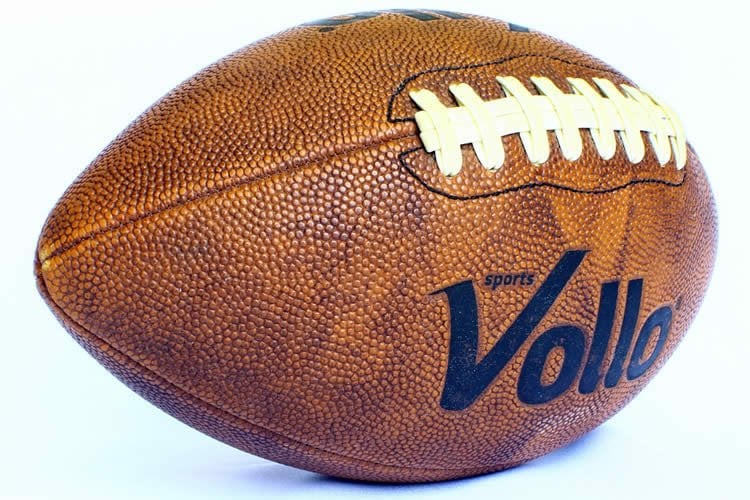Summary: Compared to players of other varsity sports, researchers did not identify an increased risk of developing neurodegenerative diseases in people who played high school football between 1956 and 1970.
Source: Mayo Clinic.
A Mayo Clinic study published online today in Mayo Clinic Proceedings found that varsity football players from 1956 to 1970 did not have an increased risk of degenerative brain diseases compared with athletes in other varsity sports.
The researchers reviewed all the yearbooks and documented team rosters for Mayo High School and Rochester High School, now called John Marshall High School. The high school football players were compared with non-football playing athletes who were swimmers, basketball players and wrestlers.
Using the medical records-linkage system of the Rochester Epidemiology Project, each student was observed for about 40 years after participation in high school sports.
Among the 296 students who played football, the researchers found:
- 34 cases of head trauma
- 5 cases of mild cognitive impairment
- 3 cases of parkinsonism
- 2 cases of dementia
- 0 cases of amyotrophic lateral sclerosis (ALS)
Among the 190 non-football athletes, the researchers found:
- 14 cases of head trauma
- 4 cases of mild cognitive impairment
- 3 cases of parkinsonism
- 1 case of dementia
- 0 cases of ALS
The football players were found to have a suggestive increased risk of medically documented head trauma, especially in the 153 students who played football for more than one season, but they still did not show increased risk of neurodegenerative diseases.
This study mirrors a previous Mayo Clinic study of high school athletes who played between 1946 and 1956. That study also found no increased risk of degenerative brain diseases. While football between 1956 to 1970 is somewhat more similar to that of the present era — including body weight, athletic performance and equipment — football-related concussions still were minimized as “getting your bell rung,” the researchers note.

Football has continued to evolve. Helmets, for example, have gone from leather to hard plastic shells. However, helmets do not eliminate concussions and may provide players with a false sense of protection, says Rodolfo Savica, M.D., Ph.D., senior author of the study and a Mayo Clinic neurologist.
The researchers point out that high school sports offer clear benefits of physical fitness on cardiovascular health, and some studies also have suggested a possible protective effect against later degenerative brain illness. But the researchers caution that additional studies are needed to explore more recent eras and to involve players who participate at the collegiate and professional levels.
“This study should not be interpreted as evidence that football-related head trauma is benign,” the researchers write. “The literature on chronic traumatic encephalopathy in college and professional football players seems irrefutable, with reports of devastating outcomes. However, there may be a gradient of risk, with low potential in high school football players that played in the study period.”
In the future, the researchers plan to replicate the study with football players in the current eras.
Source: Susan Barber Lindquist – Mayo Clinic
Image Source: NeuroscienceNews.com image is in the public domain.
Original Research: Full open access research for “High School Football and Late-Life Risk of Neurodegenerative Syndromes, 1956-1970” by Pieter H.H. Janssen, Jay Mandrekar, Michelle M. Mielke, J. Eric Ahlskog, Bradley F. Boeve, Keith Josephs, and Rodolfo Savica in Mayo Clinic Proceedings. Published online December 12 2016 doi:/10.1016/j.mayocp.2016.09.004
[cbtabs][cbtab title=”MLA”]Mayo Clinic. “High School Football Players, 1956-1970, Did Not Have Increase of Neurodegenerative Diseases.” NeuroscienceNews. NeuroscienceNews, 12 December 2016.
<https://neurosciencenews.com/football-neurodegeneration-high-school-5727/>.[/cbtab][cbtab title=”APA”]Mayo Clinic. (20112, December 12). High School Football Players, 1956-1970, Did Not Have Increase of Neurodegenerative Diseases. NeuroscienceNews. Retrieved December 12, 2016 from https://neurosciencenews.com/football-neurodegeneration-high-school-5727/[/cbtab][cbtab title=”Chicago”]Mayo Clinic. “High School Football Players, 1956-1970, Did Not Have Increase of Neurodegenerative Diseases.” https://neurosciencenews.com/football-neurodegeneration-high-school-5727/ (accessed December 12, 2016).[/cbtab][/cbtabs]
Abstract
High School Football and Late-Life Risk of Neurodegenerative Syndromes, 1956-1970
Objective
To assess whether athletes who played American varsity high school football between 1956 and 1970 have an increased risk of neurodegenerative diseases later in life.
Patients and Methods
We identified all male varsity football players between 1956 and 1970 in the public high schools of Rochester, Minnesota, and non–football-playing male varsity swimmers, wrestlers, and basketball players. Using the medical records linkage system of the Rochester Epidemiology Project, we ascertained the incidence of late-life neurodegenerative diseases: dementia, parkinsonism, and amyotrophic lateral sclerosis. We also recorded medical record–documented head trauma during high school years.
Results
We identified 296 varsity football players and 190 athletes engaging in other sports. Football players had an increased risk of medically documented head trauma, especially if they played football for more than 1 year. Compared with nonfootball athletes, football players did not have an increased risk of neurodegenerative disease overall or of the individual conditions of dementia, parkinsonism, and amyotrophic lateral sclerosis.
Conclusion
In this community-based study, varsity high school football players from 1956 to 1970 did not have an increased risk of neurodegenerative diseases compared with athletes engaged in other varsity sports. This was from an era when there was a generally nihilistic view of concussion dangers, less protective equipment, and no prohibition of spearing (head-first tackling). However, the size and strength of players from previous eras may not be comparable with that of current high school athletes.
“High School Football and Late-Life Risk of Neurodegenerative Syndromes, 1956-1970” by Pieter H.H. Janssen, Jay Mandrekar, Michelle M. Mielke, J. Eric Ahlskog, Bradley F. Boeve, Keith Josephs, and Rodolfo Savica in Mayo Clinic Proceedings. Published online December 12 2016 doi:/10.1016/j.mayocp.2016.09.004






